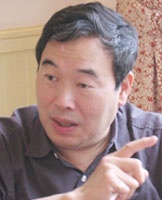
As part of a major drive for excellence in basic research in the new millennium, the Chinese Academy of Sciences (CAS) founded the Institute of Neuroscience (ION) on November 27, 1999. The institute is devoted to research in all areas of basic neuroscience, including molecular, cellular and developmental neurobiology, and systems and cognitive neuroscience. At its inception, the Institute aims to establish the infrastructure of a modern research institute that provides an environment for rigorous scientific pursuit and fruitful interactions, a merit-based system for promotion and funding, and a high-quality training program for graduate students and postdoctoral fellows. In 2014, within the framework of institutional restructuring, ION became the core unit of CAS Center for Excellence in Brain Science and Intelligence Technology (abbreviated “Brain Intelligence Center”, see website http://english.cebsit.cas.cn/). The goal of the new Center is to help integrating research activity within and outside CAS and to promote team work and interdisciplinary collaboration, in order to address major problems in the frontier of brain science and brain-inspired intelligence technology.
There are currently 50 ION laboratories in various areas of molecular, cellular, systems and cognitive neuroscience. We are recruiting new laboratory heads at a rate of 3-4 per year, with a goal of reaching a steady state of 60 laboratories by 2025. Each laboratory consists of up to five permanent staff members and a variable number of graduate students and postdoctoral fellows. Many laboratories have ongoing collaborations with other research groups in China and abroad. Long-term collaborators are appointed as Guest Investigators of ION. Funding from the CAS, Ministry of Science and Technology, and Natural Science Foundation of China have provided research supports and facilities to our researchers at a level close to that of major international institutions in the frontier of neuroscience. An International Advisory Board consisting of a group of distinguished neuroscientists has offered critical inputs into ION’s evolving organization and research activity. Academic review of individual ION laboratories by an international review committees is carried out on a regular basis, in order to ensure the quality of ION research programs.
The structure and function of the brain pose the ultimate challenge to human understanding of nature. Despite the spectacular progress in molecular and cellular biology over the last few decades, mysteries of the brain remain largely unsolved. Solution of these mysteries requires integration of experimental approaches from diverse disciplines and new conceptual frameworks that bridge understandings at different levels. The goal and agenda of neuroscience in the coming decades epitomize those of modern science - to understand nature is to understand how a natural phenomenon emerges from the properties of its constituent parts, and any description of a neural phenomenon, whether it is at the cognitive, circuit, cellular, or molecular level, is incomplete and unsatisfactory without addressing its causal links to the phenomena at a higher or lower level. To understanding the cognitive functions at the behavioral level, we need to know their underlying neural circuits, the neuronal types and synaptic connections comprising the circuits, the neuronal and synaptic properties giving rise to the circuit functions, and the genetic and molecular mechanisms responsible for the development, function, and plasticity of individual neurons and synapses.
The founding of ION in Shanghai provides a new opportunity for Chinese neuroscientists to flourish on their own soil and to contribute on a par with their peers in the international community. Visitors to ION are likely to agree with me that the vitality and enthusiasm of ION faculty and students point to a bright future for Chinese neuroscience. In the coming decades, we are looking forward to ever-lasting contributions by Chinese neuroscientists no less impressive than those bronze vessels in the Shanghai museum.